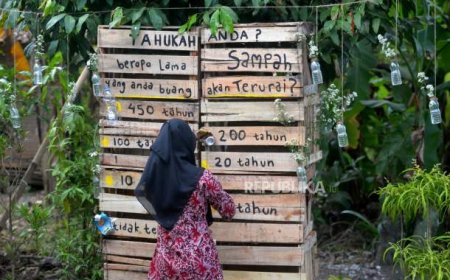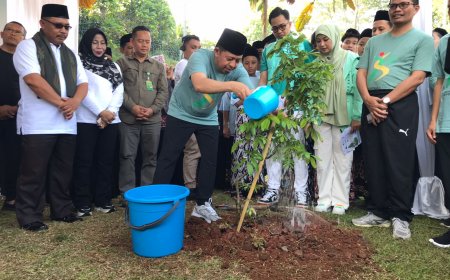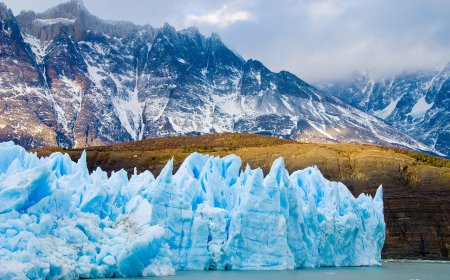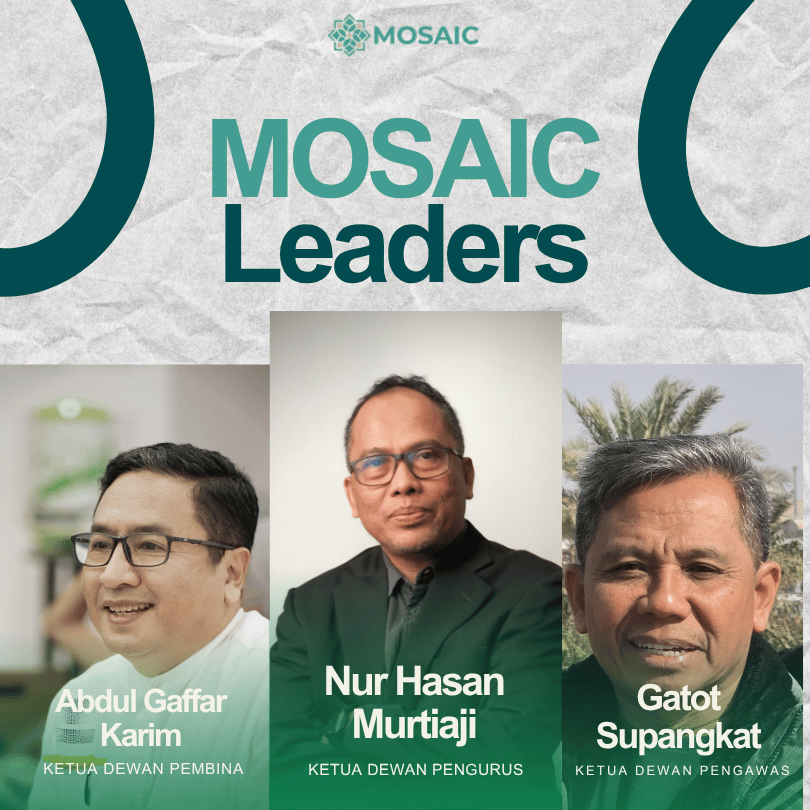Interfaith communities share climate solutions
Participants are expected to exchange information on how houses of worship maintain the environment.
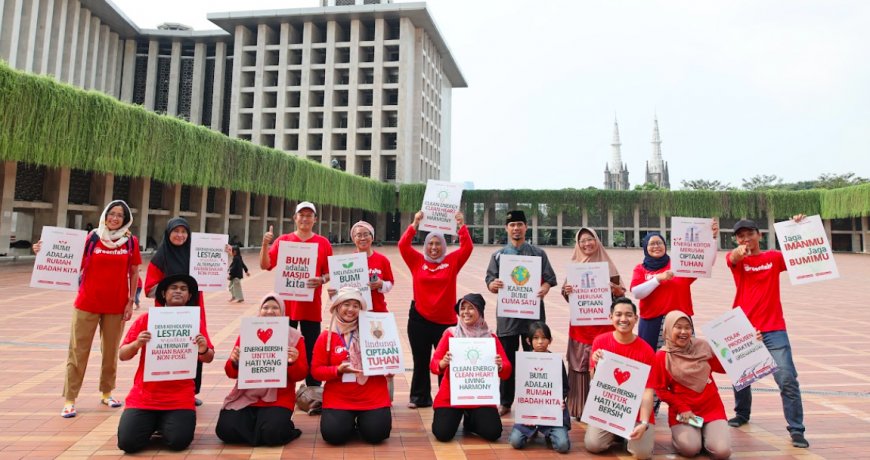
MOSAIC-INDONESIA.COM, JAKARTA -- As a place where six major religions grow and flourish, Indonesia is known as home to pluralism. The country, with a population of 275 million, has a religious community which is tolerant and moderate. In the midst of climate change that is already in plain sight, religious people - through their own wisdom - are trying to contribute to being part of existing climate solutions.
To explore this wisdom, GreenFaith Indonesia, in the framework of World Environment Day, June 5, 2024, conducted a tour of houses of worship with visits and dialogues to mosques, churches, temples, and shrines around Jakarta.
“A house of worship is a portrait of a religion in which it is not only used as a home to communicate with God through worship rituals, but also as a center or source of knowledge and a good example of religious action in carrying out God's commandments,” said Hening Parlan, National Coordinator of GreenFaith Indonesia in a written statement to Republika on Wednesday (12/6/2024).
Through this House of Worship Tour, Hening hopes that participants will be able to exchange knowledge about how religion teaches to love the environment and glorify the earth, as well as provide knowledge for its people to take action to save the earth.
Responding to the current climate crisis, Hening said, GreenFaith Indonesia as an institution engaged in the field of the environment and cooperates with interfaith and faith carrying out various activities referring to religious values and commandments as an effort to safeguard and care for the environment.
The tour started to Pura Adhitya Jaya - Rawamangun, Jakarta, on Saturday (8/6/2024). The entrants met Pinandita Pengayah Pura Adhitya Jaya, I Gde Wiyadnya. According to Wiyadnya, for Hindus, the universe is a reflection of man himself. Hindus believe that everything in the universe consists of five elements or Panca Mahabhuta, namely the elements of earth, air, fluid, space, and heat.“If all five elements in the universe are disturbed, it will have an effect on us, and vice versa,” he said.
In order to maintain the balance of the elements of Panca Mahabhuta, according to his Wiyadnya, Tri Hita Karana is needed, in which man needs to maintain a good relationship with God, with fellow human beings, and with nature.
Tri Hita Karana was later adopted when building a house of worship. “We keep our places of worship as close to the universe as possible. Therefore, the temple building is open, we plant trees, and generally have a source of water,” he added. The Temple building, clearly Gde, consists of three zones. Nista or terrace located outside, Madya or central room, and Main or special room of worship. In addition to functioning vertically, or only for worship of God, the Temple can also function horizontally or for social activities between peers, “Like GreenFaith visits, we currently use Pura in the middle zone,” he explained. The visit continued to GIPB Paulus — Taman Sunda Kelapa.
In St Paul's GPIB (Protestant Church), Rommi Matheos as Pastor of Paul's GPIB, explains the Christian faith believing that this world is God's creation, created for 6 days, on which the 7th day man is asked to rest, or not work or is called the Sabbath. “God wants people not only to work but also to rest and pay attention to the earth, this is where awareness grows for us to save the environment,” he said. Regarding the concept of the doctrine of salvation itself, Pastor Mattheos continued, God commands the effort to maintain His creation, is for the salvation of the world and nature.
As a concrete step forward from the teachings of the Christian Faith, St. Paul's Church runs a program of community and environmental or Germanic Movement services as decided at the Synod held each year. “At GPIB Paul we no longer use paper when we worship, but start paperless, and we provide sorting bins so that the congregation can sort garbage according to its type,” Pastor Mattheos said.
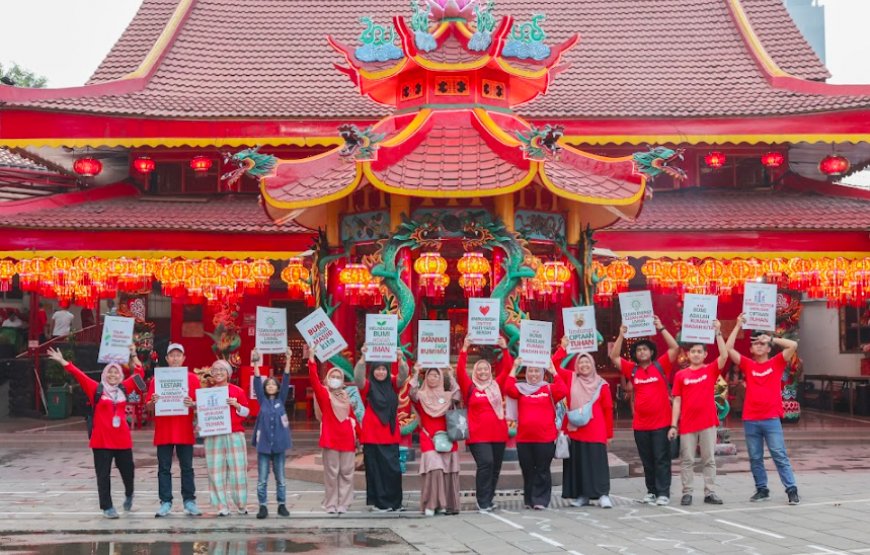
At the Tzu Chi Buddhist Foundation — Kapuk Beautiful Beach, the team got an explanation from Juny Leong Min Wu, Tzu Chi Buddhist human volunteer. He narrates the history, values of teachings, and the conduct of Madzhab Tzu Chi in Indonesia in the fields of education, social, humanitarian, and environmental. The driving figure of Madzhab Tzu Chi, Master Cheng Yen, is a Taiwanese female Buddhist monk or leader. The inspiration of 'Coexistence with the earth' became the value of Master Cheng Yen's teachings on environmental preservation.
Since 1990, Tzu Chi people have been sorting and managing waste into useful items. “Turning trash into gold, and gold into love, is the spirit that Master Cheng Yen teaches,” Juny said. The problem of garbage must be tackled together and become the responsibility of everyone and Tzu Chi volunteers actively educate the public to carry out garbage sorting and recycling at the Tzu Chi Environmental Preservation Education Depository.
The tour continued on Sunday (9/6/2024) to the office of the Head of Central Muhammadiyah - Menteng Raya. In the building, which is the oldest Islamic institution in Indonesia, participants learned about the real action of realizing climate justice through renewable energy in the Dakwah Building of the Central Muhammadiyah Foundation, which already uses rooftop solar as its alternative energy source. “This real step is able to reduce the cost of using electricity from fossils. If the solar panels function to the maximum, the cost of electricity consumption per month can be more economical by Rp 15 million, than the usual more than Rp 40 million per month,” said Hening, Deputy Chairman of the Environment Assembly (MLH) of the Central Leadership (PP) of Muhammadiyah
.
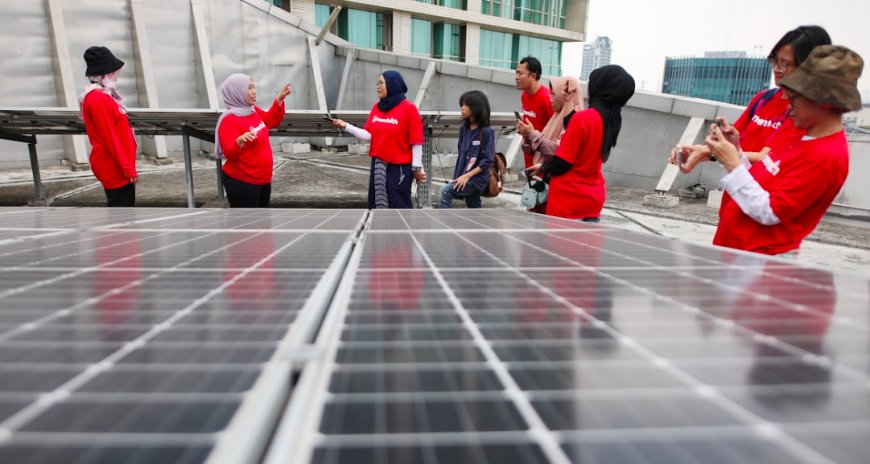
The Muhammadiyah movement is based on the spirit of Al Maun belonging to the movement to preserve the environment. “Al Maun is one of the letters in the Quran that became the spirit of the Muhammadiyah movement to pay attention to and support our poor, poor, and orphaned brothers. It has now evolved into 'Green Al Maun', where Muhammadiyah sees the poor, poor, and orphans affected by the climate crisis,” Hening said. Muhammadiyah has had an Environmental Assembly since 18 years ago, with the hope that Muhammadiyah contributes to sensitizing its people to care more about the environment. Not only is rooftop solar, the building also has wastewater management channels that are reused to flush plants
and vehicles. The tour then continued to Istiqlal Mosque, Jakarta. The knowledge of the participants' energy grew more and more from the visit to the Istiqlal Mosque. The largest mosque in Southeast Asia is equipped with more than 15 kilowatt peak rooftop solar which supplies 16% of the mosque's electricity needs. The use of rooftop solar in the Istiqlal Mosque building has been going on since 2019 with the system on grid or connected to power lines from PLN.
Saparwadi, Head of Public Relations and Protocol of the Istiqlal Mosque Managing Body said that in 2022, Istiqlal Mosque has been awarded the world's first Green Mosque award from the International Finance Corporation (IFC). “The building of Jakarta's Istiqlal Mosque, which has an area of 4 hectares and a land of 9.6 hectares, now uses 504 solar panels, which, thank God, has helped save the budget of up to 100 million rupiah out of a total average of 200 million rupiah per month,” Saparwadi said.
In addition to utilizing solar energy, Istiqlal Mosque also performs water conservation by saving the amount of ablution water discharge that comes out and reprocessing it for use watering trees and plants in the mosque area.
From Istiqlal Mosque, participants met Romo Pandita Mettiko, at Hok Tek Teng Sin Shrine/Amarvabhumi Monastery. The temple, which is more than 100 years old, survives amid skyscrapers in central Jakarta. A vivid proof of how earthly life must be balanced against man's relationship with Tian/God and the constantly changing environment.
“The man who nurtures the earth provides the way to heaven. A clean and sustainable environment will be comfortable for all to live in, but if it is damaged, we are all affected, “said Romo Pandita Mettiko. “If we are not brothers in faith, we can still be brothers in humanity, let's take care of our environment together,” he added.

